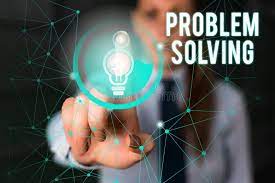Mathematics stands as a beacon of logic and precision, providing invaluable tools for understanding the intricacies of the universe. From the elegant simplicity of calculus to the structured rigor of linear algebra, mathematical tools form the foundation upon which countless disciplines build their understanding and innovation. In this exploration, we’ll delve into the rich tapestry of mathematical tools, highlighting their universal applicability and transformative potential.
- Calculus: The Language of Change
At the heart of mathematical analysis lies calculus, a discipline that illuminates the dynamics of change and motion. Developed by luminaries like Newton and Leibniz, calculus provides a framework for understanding rates of change, accumulation, and optimization. Differential calculus, with its focus on derivatives and rates of change, finds application in physics, engineering, and economics, enabling the optimization of functions and the modeling of dynamic systems. Integral calculus, on the other hand, unlocks the mysteries of accumulation and area, vital for solving problems in physics, economics, and geometry.
- Linear Algebra: Mapping the World
Linear algebra serves as the scaffolding upon which many mathematical structures are built, providing a language for understanding patterns and transformations. With concepts like matrices, vectors, and linear transformations, linear algebra finds applications in diverse fields such as computer science, physics, and economics. Matrices, for example, offer a compact representation of complex systems, facilitating efficient computation and analysis. Eigenvalue analysis, a fundamental concept in linear algebra, underpins algorithms in machine learning, quantum mechanics, and signal processing.
- Probability and Statistics: Taming Uncertainty
In a world fraught with uncertainty, probability theory and statistics offer a beacon of clarity and understanding. Probability theory quantifies uncertainty and randomness, providing a framework for reasoning about uncertain events and outcomes. Statistics, on the other hand, involves the collection, analysis, and interpretation of data, enabling insights into patterns, trends, and relationships. Statistical methods, such as regression analysis, hypothesis testing, and Bayesian inference, permeate fields ranging from medicine and social sciences to finance and engineering, offering a systematic approach to decision-making in uncertain environments.
- Discrete Mathematics: Unveiling Hidden Structures
Discrete mathematics focuses on the study of structures and phenomena that are inherently discontinuous or countable. From combinatorics and graph theory to discrete optimization, this branch of mathematics finds applications in computer science, cryptography, and operations research. Combinatorics, for instance, provides tools for counting and arranging objects, essential for analyzing permutations, combinations, and probability distributions. Graph theory, meanwhile, offers a formal framework for representing and analyzing relational structures, such as social networks, transportation systems, and communication networks.
- Numerical Methods: Bridging Theory and Practice
Numerical methods provide practical techniques for approximating solutions to complex mathematical problems that defy analytical resolution. These methods, including numerical integration, root finding, and linear algebra algorithms, enable the efficient computation of solutions to differential equations, optimization problems, and eigenvalue problems. Numerical methods find applications in scientific computing, engineering simulations, and financial modeling, offering a bridge between theoretical insights and real-world applications.
In conclusion, mathematical tools serve as indispensable instruments in the pursuit of knowledge and understanding across diverse disciplines. Whether unraveling the mysteries of the cosmos or optimizing engineering designs, these tools empower researchers, engineers, and analysts to navigate the complexities of the natural and social world. By mastering mathematical tools and fostering interdisciplinary collaboration, we unlock new frontiers of innovation and discovery, shaping a brighter future for generations to come.





























